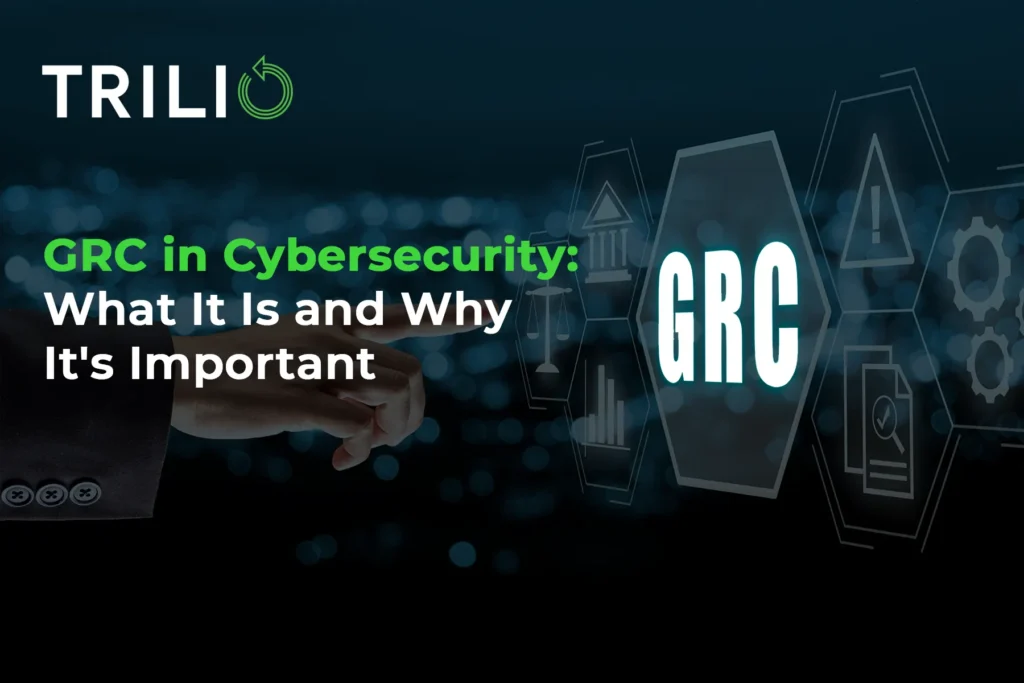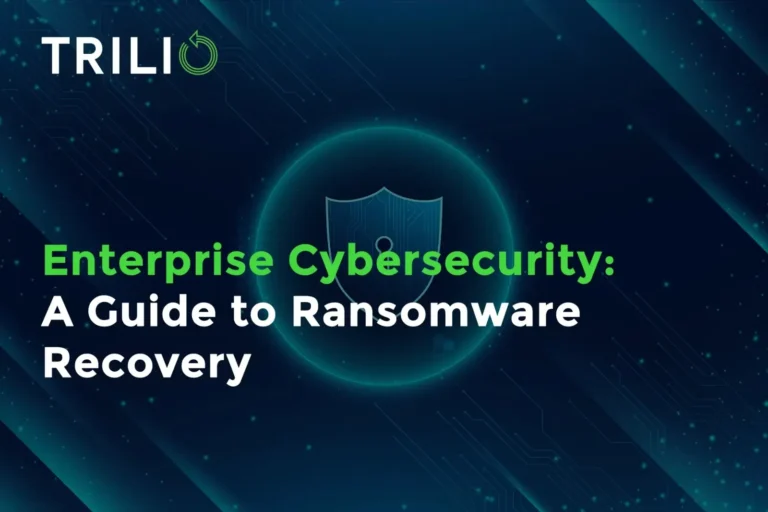With businesses increasingly relying on digital systems, the combination of governance, risk management, and compliance (GRC) has become essential for an effective cybersecurity strategy. This framework helps organizations manage cyber risks, comply with regulations, and protect sensitive data.
As cyberattacks become more frequent and sophisticated, GRC in cybersecurity provides the foundation for a strong cybersecurity program, allowing businesses to identify weaknesses, assess risks, and put in place effective safeguards. Let’s explore the core components of GRC and their crucial role in building a reliable cybersecurity strategy.
Governance in GRC Cybersecurity
Governance, the first pillar of GRC cybersecurity, focuses on establishing a clear framework for managing and directing cybersecurity efforts within an organization. It involves defining policies, procedures, and standards that guide decision-making and actions related to cybersecurity. This framework ensures that cybersecurity is not an afterthought but rather an integral part of the overall business strategy, with defined responsibilities and processes.
Policies and Procedures
Clear and comprehensive policies and procedures are essential for effective cybersecurity governance. These documents outline the organization’s stance on cybersecurity GRC issues, define acceptable behaviors, and provide guidelines for handling security incidents. They should cover areas such as access controls, data protection, incident response, and disaster recovery. Through establishing these policies and procedures, organizations create a common understanding of cybersecurity expectations and responsibilities, ensuring consistency and accountability across all levels.
Roles and Responsibilities
Any effective cybersecurity GRC program requires clearly defining roles and responsibilities. This means identifying who is responsible for specific tasks such as risk assessments, security audits, incident response, and policy development. By assigning ownership, organizations ensure that cybersecurity tasks are not neglected and that there is accountability for their completion. Clear roles and responsibilities also help avoid duplication of effort and ensure that cybersecurity activities are coordinated effectively.
Risk Assessment and Incident Response Processes
Two critical components of cybersecurity governance are risk assessment and incident response processes. Risk assessment involves identifying potential threats and vulnerabilities within the organization’s systems, networks, and applications and evaluating the likelihood and potential impact of these risks. This information is then used to develop and implement risk mitigation strategies. Incident response processes outline the steps to be taken in the event of a security breach, such as containing the incident, eradicating the threat, recovering from the attack, and learning from the experience to prevent future incidents.
Effective governance is not just about rules and regulations—it’s about creating a culture of cybersecurity GRC awareness and responsibility throughout the organization. By establishing clear policies, defining roles, and implementing risk assessment and incident response processes, organizations can build a strong foundation for their cybersecurity programs.
Risk Management in GRC Cybersecurity
The second pillar of GRC cybersecurity, risk management, is a proactive approach to identifying, assessing, and mitigating potential cyber threats. It involves a systematic evaluation of vulnerabilities and threats, both internal and external, to understand their potential impact on an organization’s assets and operations. Employing effective risk management means that organizations can make informed decisions about resource allocation and can implement strategies to minimize the risk of cyberattacks.
Risk Identification
The first step in risk management is identifying potential risks by conducting a thorough examination of the organization’s IT infrastructure, including hardware, software, networks, and data. It also entails considering external factors such as the threats, industry trends, and regulatory requirements. Common cybersecurity risks include data breaches, ransomware attacks, phishing scams, and system failures. Identifying these risks requires a multi-faceted approach that combines technical expertise, threat intelligence, and a deep understanding of the organization’s business operations.
Risk Assessment
Once potential risks are identified, the next step is to assess their likelihood and impact. This involves evaluating the probability of a risk event occurring and the potential consequences if it does. Risk assessment is not an exact science; it relies on a combination of qualitative and quantitative analysis.
Organizations can use various tools and techniques, such as risk matrices, to determine the risk level of each identified risk. This assessment helps prioritize risks and allocate resources to address the most critical threats first.
Risk Mitigation
After risks have been identified and assessed, the next step is to develop and implement risk mitigation strategies. This requires implementing security controls, such as firewalls, intrusion detection systems, and encryption, to protect against identified threats. It also includes developing incident response plans, conducting regular security testing, and providing cybersecurity training to employees.
Risk mitigation is an ongoing process that requires continuous monitoring and adjustment as new threats emerge and the organization’s IT environment evolves. Risks need to be monitored and updated regularly to ensure that mitigation strategies remain effective. Additionally, organizations should conduct regular risk assessments to identify any new or emerging risks that may have arisen.
Compliance in GRC Cybersecurity
Compliance, the third pillar of GRC cybersecurity, focuses on ensuring that an organization adheres to relevant laws, regulations, and industry standards. It involves identifying applicable regulations, implementing necessary controls, and continuously monitoring compliance activities. By maintaining compliance, organizations not only avoid legal penalties and financial losses but also protect their reputation and build trust with customers and stakeholders.
Identifying Applicable Regulations
The first step in achieving compliance is identifying which laws, regulations, and industry standards apply to the organization’s operations. This can be a complex task because the regulations are constantly evolving and varies across industries and geographic locations. Organizations must stay up to date on the latest regulations and ensure that they are aware of any changes that may affect their compliance obligations. This often involves consulting with legal and compliance experts to ensure that all relevant regulations are identified and understood.
Implementing Controls
Once the applicable regulations have been identified, the next step is to implement the necessary controls to meet compliance requirements. This may involve technical controls, such as firewalls and encryption, as well as operational controls like access management and incident response procedures. The specific controls required will depend on the nature of the organization’s operations and the specific regulations that apply. Implementing these controls can be a significant undertaking, but it is essential for ensuring compliance and protecting the organization from legal and financial risks.
Monitoring Compliance Activities
Organizations must continuously monitor their compliance activities to ensure that they are meeting their obligations. This involves regularly reviewing policies and procedures, conducting internal audits, and tracking changes in the regulations. By actively monitoring compliance, organizations can identify and address any potential issues before they become major problems. This proactive approach helps minimize the risk of noncompliance and its associated consequences.
In the context of GRC cybersecurity, compliance is not merely a checkbox exercise. It is a strategic imperative that can have a significant impact on an organization’s bottom line and reputation. By proactively identifying and addressing compliance risks, organizations can protect themselves from legal and financial penalties, build trust with customers and stakeholders, and strengthen their overall cybersecurity.
Benefits of a GRC Cybersecurity Framework
A GRC cybersecurity framework provides numerous advantages for organizations:
- Stronger Security: A structured approach to identifying, assessing, and mitigating risks ensures comprehensive protection and continuous improvement of an organization’s security posture.
- Reduced Cyberattacks: Proactive risk management, including vulnerability patching and employee training, significantly decreases the likelihood of successful cyberattacks. Regular reviews and updates of security measures further minimize risks.
- Improved Compliance: GRC streamlines compliance efforts, helping organizations identify and implement necessary controls to meet regulatory requirements, avoiding penalties and reputational damage.
- Business Continuity: A well-defined incident response plan enables swift containment and recovery from cyberattacks or disruptions, minimizing downtime and data loss. GRC also helps identify critical assets for prioritized recovery, ensuring operational resilience.
Enhancing security, reducing risks, improving compliance, and ensuring business continuity mean that GRC lays the groundwork for long-term success in the digital age.
GRC Cybersecurity: A Strategic Investment for the Digital Age
GRC cybersecurity is no longer a luxury but a necessity. Evolving threats demand a proactive and comprehensive approach to safeguarding sensitive data and ensuring operational resilience. By integrating governance, risk management, and compliance, organizations can create a robust cybersecurity strategy that mitigates risks, strengthens compliance, and fosters a culture of security awareness.
Trilio recognizes the critical role that GRC cybersecurity plays in protecting modern businesses. Our data protection solutions are designed to address the core components of GRC, empowering organizations to build and maintain a resilient cybersecurity framework.
- Governance: Trilio enables organizations to establish clear policies and procedures for data protection, ensuring that all stakeholders understand their roles and responsibilities in safeguarding critical information.
- Risk Management: Trilio’s advanced backup and recovery capabilities help organizations identify and mitigate risks associated with data loss, system failures, and cyberattacks. By providing comprehensive data protection for Kubernetes, KubeVirt, and OpenStack environments, Trilio ensures that critical applications and data are always available and recoverable, even in the face of unexpected disruptions.
- Compliance: Trilio’s solutions help organizations meet regulatory compliance requirements by providing secure and reliable data backup and recovery processes. With features such as immutable backups, Trilio ensures that data is protected from unauthorized access and modification, helping organizations meet stringent compliance standards.
GRC cybersecurity is a cornerstone of effective risk management and data protection. By partnering with Trilio, organizations can leverage our expertise and innovative solutions to build a resilient GRC framework that safeguards their critical assets and ensures long-term success in the digital age.
Contact us today to learn more about how Trilio can help you strengthen your GRC cybersecurity strategy and protect your business from evolving cyber threats.
FAQs
How does GRC cybersecurity differ from traditional cybersecurity approaches?
Traditional cybersecurity often focuses on reactive measures, responding to threats as they arise. GRC cybersecurity, on the other hand, takes a proactive and holistic approach, incorporating governance, risk management, and compliance to build a more resilient security posture.
What are the key benefits of implementing a GRC cybersecurity framework?
Implementing a GRC cybersecurity framework offers several benefits, including improved security, reduced risk of cyberattacks, enhanced compliance with industry regulations, and better business continuity and resilience in the face of potential threats.
Which industries can benefit from GRC cybersecurity?
GRC cybersecurity is beneficial for organizations across all industries. However, it is particularly crucial for industries that handle sensitive data, such as healthcare, finance, and government, as well as those operating in highly regulated environments.
How can small and medium-sized businesses (SMBs) implement GRC cybersecurity with limited resources?
While GRC cybersecurity can seem daunting for SMBs with limited resources, there are scalable solutions available. Start by prioritizing key risks, focusing on essential controls, and leveraging automation tools to streamline processes. Consider partnering with a GRC cybersecurity provider for expert guidance and support.
What are the potential consequences of neglecting GRC cybersecurity?
Neglecting GRC cybersecurity can expose organizations to various risks, including financial losses due to cyberattacks, legal penalties for noncompliance, reputational damage, and loss of customer trust.


